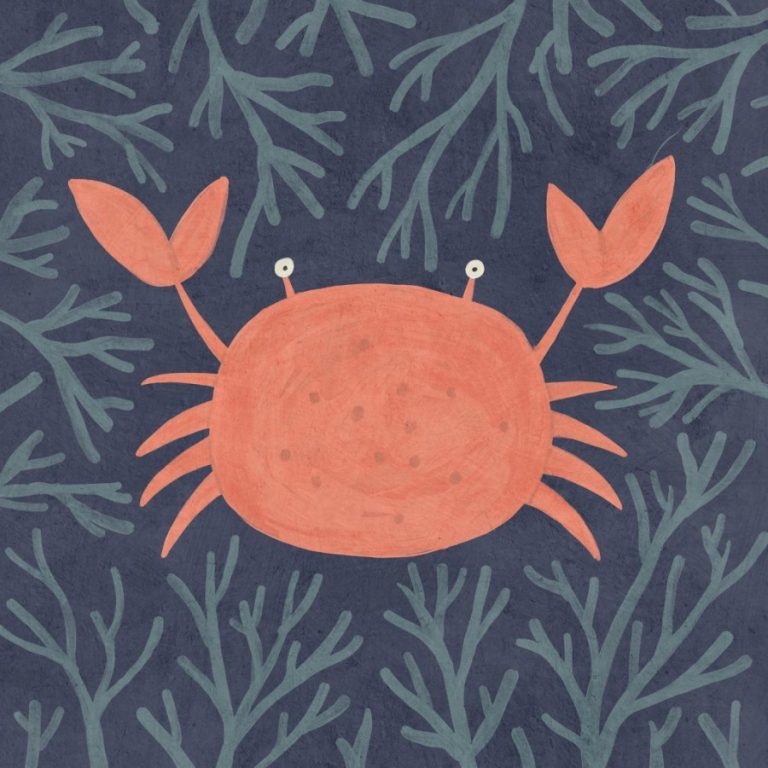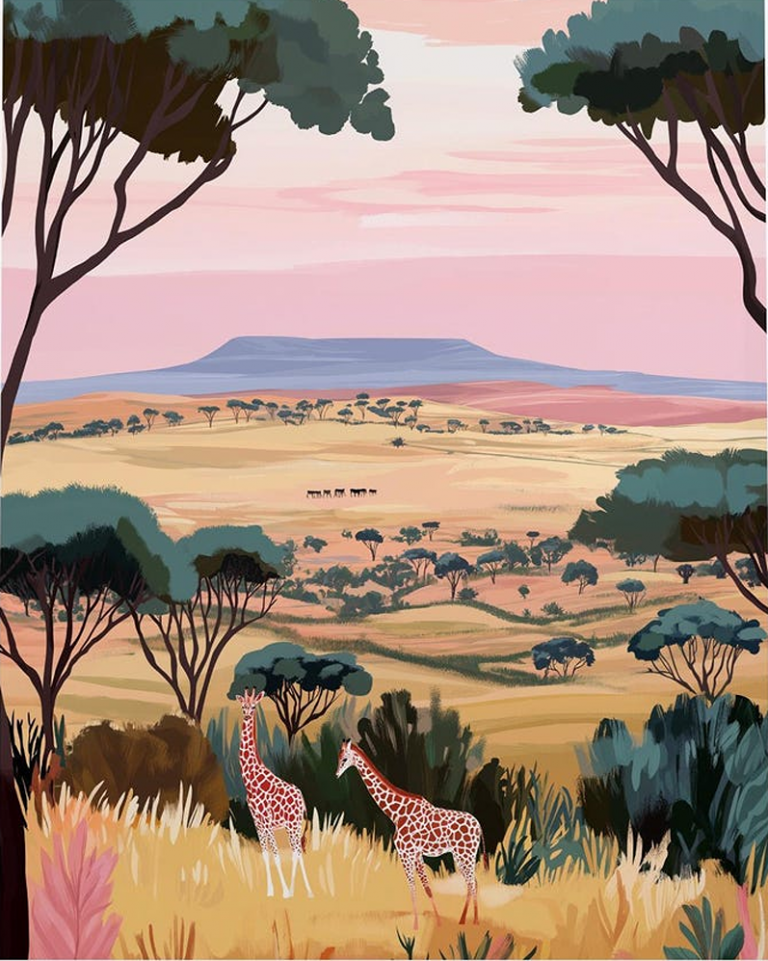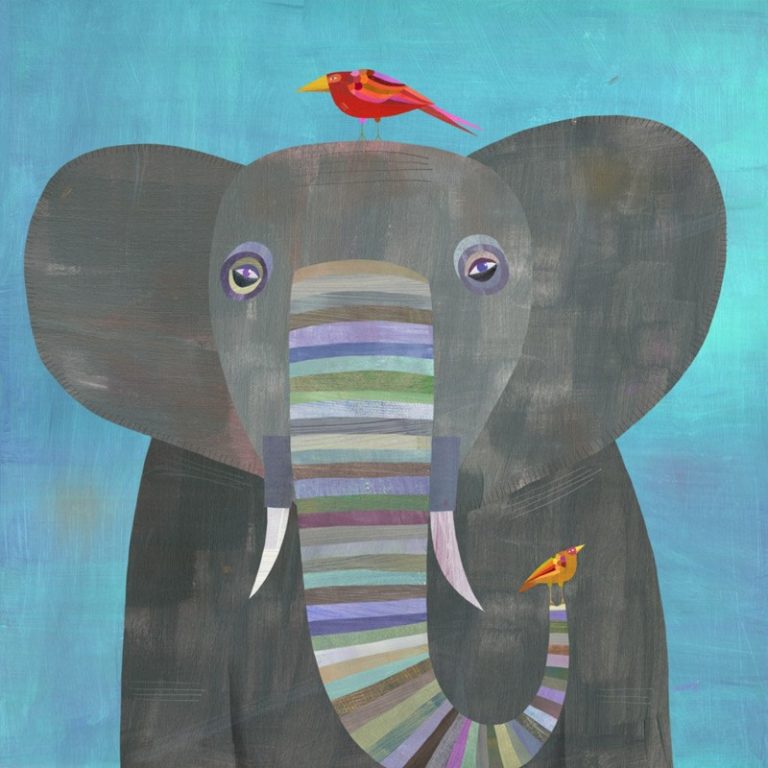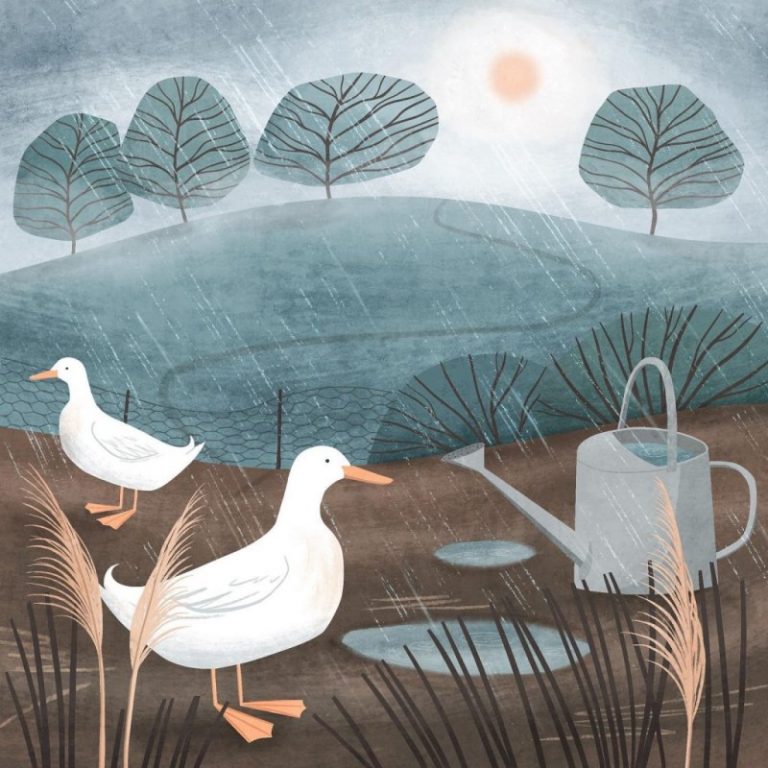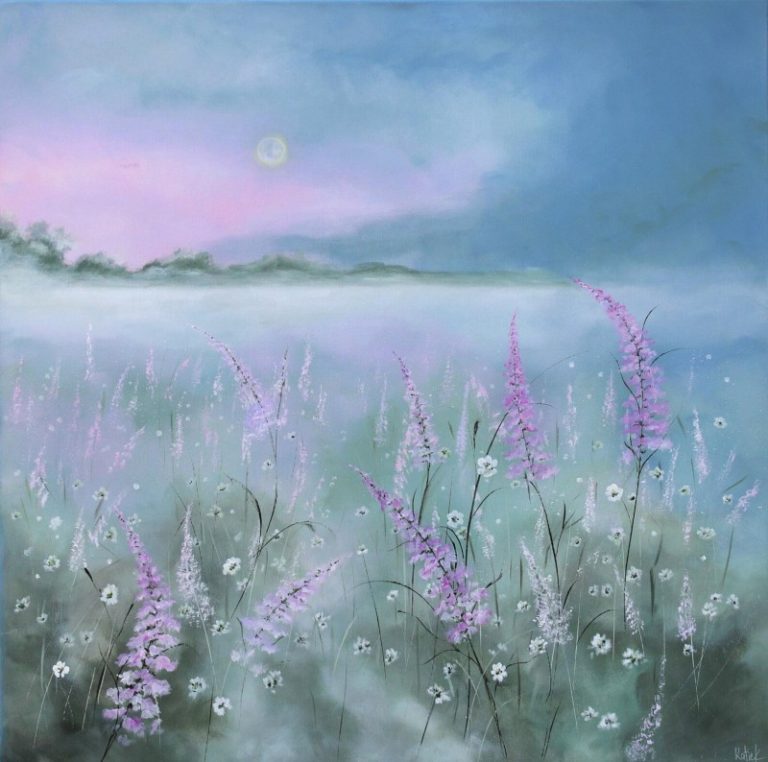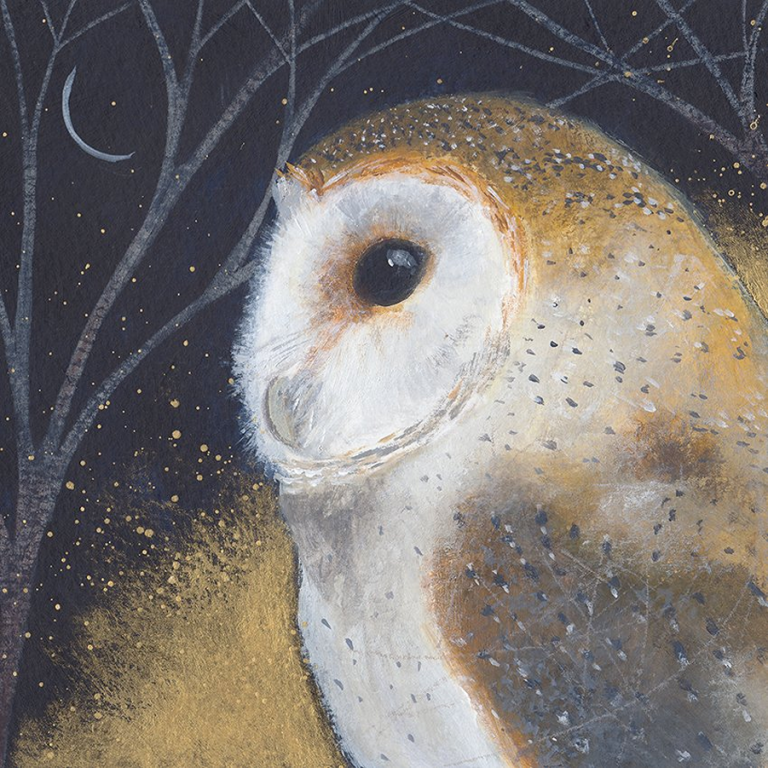
Owls are mysterious birds with eyes that face forward, and can turn their heads 270 degrees to hunt prey. Owls have three eyelids (one to blink, one to sleep and one to wash the eye). Most have one wing higher, so they can fly silently (the feathers breaking turbulence into smaller sound currents).
In order to eat around 4 voles, shrews, rabbits and rats each night. Owls catch prey with their sharp talons (their toes face different directions for better hunting).
And if anyone knows anything about anything – it’s Owl who knows something about something. Owl is the grand and rather clever old man of the forest. He can also spell Tuesday. A A Milne (Winnie-the-Pooh)
There’s something special about spotting a wild owl in England. Their quiet ways and nightly hunting make them feel almost magical, as if they slip through the countryside unseen. These birds play a key role in keeping local nature in balance, yet many people barely notice them.
Owls face more challenges today, and some are becoming rare. The good news is, you don’t need to be a scientist to make a real difference. Simple changes in your garden, joining in with neighbours, or just learning more about your local birds can help keep these mysterious owls safe for years to come.
Understanding England’s Wild Owls

Every owl species in England brings its own rhythm and habits to the countryside. When you learn what each type needs, it’s clear why even small changes in our daily lives can mean a lot. Let’s explore what makes these birds tick and what gets in their way.
Key Species and Their Needs
England’s countryside is home to five main wild owl species. Each one has slightly different habits, needs and quirks:
- Barn Owl: These pale, heart-faced owls are often seen gliding low over grass fields at dusk. They rely on rough grassland, wild roadside verges, and open fields for hunting voles and mice. Barn owls nest in old barns, tree hollows or nest boxes, away from busy roads. They have a screech that ornithologist Matt Sewell says can strip your fingernails! They also hiss and snore!
- Tawny Owl: The most common English owl, tawny owls have a rounded face and a deep “twit-twoo” call. They love old woodlands, parks with big trees and even large gardens. Tawny owls need tree cavities for nesting and hunt at night for small mammals and birds. Pairs often stay together for life and defend their patch fiercely all year.
- Little Owl: These small, bold owls perch in daylight and dart across farm fields, hedgerows, or orchards. Little owls often use holes in trees, old barns, or stone walls for roosting and breeding. They eat insects, worms, and sometimes small birds. If you spot an owl in broad daylight perched on a fence, it’s likely a little owl. Their call is like a dog barking!
- Long-eared Owl: The least spotted and most secretive of the four, long-eared owls have tall ear tufts and orange eyes. They roost hidden in dense hedges or thick woodland and nest in old magpie or crow nests rather than holes. Their hunting happens at dusk over farmland, and they prefer a mix of open fields and dense hedges for cover. These owls gather in small groups in winter, often sharing a hedge. They call ‘hoo hoo hoo!’
- Short-eared owls are also mottled brown. They call ‘boo boo boo!’
Major Threats Facing Owls
Owls might look like they have it all figured out, but modern life throws up plenty of risks. Here are the biggest hurdles:
- Road Traffic: Barn owls in particular are at risk from cars at dusk, as low hunting flights bring them into danger. Roadside grassy verges that attract their prey also tempt the owls—a risky combo.
- Rat Poison (Rodenticides): Many farms use strong poisons to control rats and mice. Owls eating poisoned rodents can themselves be poisoned, which can lead to fewer owls surviving and breeding. It’s a hidden danger that stacks the odds against them.
- Drowning in Water Troughs: Farming fields and pastures often have deep, steep-sided water troughs. Young or tired owls sometimes fall in and can’t climb back out.
- Loss of Roost and Nest Sites: Replacing old barns with sealed new buildings, felling veteran trees, or removing stone walls takes away safe nesting spots. Even garden tidy-ups can accidentally get rid of favourite hiding places.
- New Infrastructure Projects: The HS2 rail line, for example, has caused the loss and splitting up of large areas of wild habitat that owls depend on for hunting and breeding. When their habitats get broken up, it’s harder for owls to find food, shelter, and each other.
Barn Owl Trust says that HS2 is ‘a very expensive way of killing owls’.
These problems often come together, making life tough for wild owls here. Each threat can push numbers down on its own, but it’s the overlap that really puts England’s wild owls under pressure.
The more we notice these risks, the easier it is to spot small ways we can help even from our own gardens or on local walks.
Creating Safe Habitats For Owls

Owls depend on healthy fields and meadows for hunting. When wildflowers and long grasses are cut less often, they draw in insects, mice and voles. These small creatures are the main food for owls. Supporting local projects that restore wild meadows makes a real difference.
Installing owl boxes can help, to replace what’s been lost. But like all bird boxes, you have to know what you’re doing.
Owls don’t build nests like other birds, and owls also sit on pellets (not straw), so nest boxes could become waterlogged.
- Barn Owl Trust has advice on how to choose, build, buy and site owl boxes, whether you do this indoors (like a barn) or on a tree. It says the nest box is only as good as the land surrounding it, for natural food.
- These barn owl nestboxes are designed alongside Barn Owl Trust, to stop owlets falling out, and protect from bad weather.
- Safe cleaning is important to stop pellets building up, or owlets could climb out of the box too early.
The Wildlife Community sells quality nest boxes for:
- Barn owls
- Little owls
- Tawny owls
- Each listing has info on erecting and siting.
Only clean nest boxes after the breeding season. Remove debris and potential parasites (wear gloves). And use boiling water only to clean, then air-dry.
You can’t disturb owls or owlets, unless a licensed wildlife worker.
It sometimes takes a year or two for owls to move in, but patience pays off. If you work with neighbours or your local school, several boxes across your area can really boost local numbers.
Providing Water Without Drowning Risks

Water is just as important as food for owls, especially in dryer spells. But deep troughs and bowls can turn deadly for young or tired birds. Here’s how to make water safe for owls:
- Barn Owl Trust shows how to keep owls safe from open water troughs (on farms) and containers with over 120mm of water (a potential death-trap for all wildlife). It shows how to make a proper float that lasts years (wood won’t work, as it sinks when waterlogged).
- This wildlife trough includes a valve to prevent freezing (and lets small creatures escape).
- Two ideas are stock troughs (don’t get waterlogged) and FrogLog (a weighted inflating platform from a wildlife biologist, for small creatures to escape from pools).
- Stone Edges and Safe Borders: Line water features with stones, bricks, or rough edges so owls can grip and escape if they fall in. Smooth plastic or metal sides are risky because birds can’t get a grip.
- Rain Barrels with Ramps: Collecting rainwater? Fit a floating plank or a sturdy ramp inside the barrel so anything that slips in can reach safety.
- Regular Checks: Every week, walk round your troughs and ponds to make sure ramps or sticks are still in place and nothing is blocked or broken. If you find trapped wildlife, move them to safety (using gloves).
- Create a shallow wildlife pond with sloping sides so owls and hedgehogs can drink and bathe safely. Set up old washing-up bowls at ground level, half-buried for stability.
Owls are drawn to fresh water. These simple tweaks keep your garden both welcoming and safe.
Deter Rats Naturally
- Owls eat rats, so avoid rat poison. Deter rodents by not leaving out food (nor composting animal foods).
- Be tolerant of natural predators like owls (and foxes).
- These are better solutions than terriers (dogs may ingest rat poison or get intestinal worms/toxoplasmosis).
- Live rat traps often cause long deaths (and leave babies behind).
- RatMesh (is a stainless steel version of an invention to deter mice. Do not cover air vents or gas appliances (this can block with dust, leaves or dirt, and increase risk of carbon dioxide poisoning).
- Gardener Ellen Christine says try planting mint, lavender or rosemary (avoid toxic plants near pets). She says organic mulches (wood chip or straw) may encourage rodents, as hiding places.
If I am to love owls, then I must learn to live with rats. Alys Fowler
Owl-Friendly Farmers & Town Planners

- Farmers and town planners can do lots to help owls, simply by learning how they live, and how to plant and build. Read how to manage land barn owls (Barn Owl Trust).
- Barn owls are protected by law from disturbance during nesting (from when the egg is laid until the last dependent stops returning to the nest). Penalties include fines up to £5000 or 6 months imprisonment (per bird, nest or egg).
- It’s a worthwhile £300 for planners to take their training course (includes the Barn Owl Conservation Handbook. Chris Packham says every council should have a copy, so one staff member can become a ‘barn owl agent’.
- Report dead owls, using six-figure grid references.
Keep Owls Safe By Roads
- This needs good town planning with ‘tree screens’ at certain measurements, which helps to force owls (and bats) to fly higher .
- The Barn Owl Trust also has info for farmers to help reduce electrocution, by burying cables and insulating droppers that connect to transformers.
- A good idea is Bird diverters (invented to help swans avoid pylons). Make wind turbines safer by placing further apart, painting one blade (and the towers) black and using bladeless turbines (owls are not as affected by wind turbines, as they fly lower).
- Ground-level solar panels don’t appear to be as harmful as tall solar towers (which can incinerate birds).
Install Bird-Proof Chimney Cowls
Like crows, signs of owls are twigs, grass, leaves and hair falling into fire grates (use gloves to remove bird droppings).
- If birds are already nesting, you must legally leave them until they’ve flown the nest, so don’t light fires.
- For stuck birds, RSPB says to shine a bright torch up the chimney at night, then birds will fly towards ‘daylight’ (catch in a sheet, to safely release outside).
- To prevent birds nesting in chimneys, be sure they have flown the nest (likely winter, though pigeons can nest year-round).
- Then have a sweep clean your chimney, and fit a chimney cowl or pot (install correctly, so oxygen can circulate).
- For gas fires, you’ll need a qualified fitter to move your fireplace away from the chimney opening, to conduct any work.
How to Help Orphaned or Injured Owls
- Barn Owl Trust has info. As with all baby wildlife, monitor closely before stepping in, as often parents are watching nearby. The site shows how to pick up a live owl and how to check for injuries.
- Barn owls on the ground need help, so call your local wildlife rescue, Raptor Rescue or Suffolk Owl Sanctuary’s emergency helpline.
- The Owls Trust also good advice if you find baby owls (not always orphaned, just testing their wings). Tawny owls should be observed, as often parents are nearby (or place safely in a high tree branch). Place ‘little owls’ back in nests, or near where you found them, if safe.
- Wear gloves (or use a thick towel) to place in ventilated boxes (avoid towels with tassels, they can catch).
- Grasp gently (feet are more likely to get you than beaks!) Keep in a quiet area at room temperature, until help arrives.
Don’t Keep Owls as Pets
Barn Owl Trust does not agree with keeping owls as pets. They are wild birds (and unlike dogs, have no loyalty).
They may see you as a potential mate, can be aggressive and will happily leave you to the next person providing food, no matter how much you love her or him!
This is why falconry owls can get tangled in ‘leather strips’, when they try to fly off.
Protect Pets from Birds of Prey
This happens more in North America due to larger species, but it’s important to keep small dogs and rabbits etc safe, especially as wild birds lose natural hunting habitats.
Keep dogs indoors at night (supervise while outside at night, as birds are less likely to attack if humans are nearby). Supervise small animals like rabbits/guinea pigs when outside, and keep them inside at night (hutches for rabbits and guinea pigs should be large but secure).
If you see a bird of prey circling or attacking a domestic pet, advice is to approach the pet while yelling and making loud noises (if attacked, immediately visit the vet, as wounds could become infected).
Learn more on how to make your garden safe for pets. It’s better to encourage birds of prey to stay in the wild, to keep pets safe (birds of prey need open farmland over domestic gardens).
Books to Read More About Owls

Owls: Our Most Enchanting Bird is a beautifully illustrated book for adults or children, by ornithologist and artist Matt Sewell. The 50 hand-painted owls include owls from over the border like tiny elf owls.

The Owl: A Biography is by a man who teaches nature writing at Bath University. Meet all native species of owls, along with a couple of ‘northern owls’ (the snowy and eagle owls). Learn how an owlet hatches, then grows to hunt prey and raise the next generation.

What An Owl Knows is a charming read, giving an intimate glimpse into the lives of these magnificent birds. From evolutionary quirks behind their silent flight and rotating heads, to their romantic relationships and parenting styles, this brings the rich natural history of owls to life.

The Book of the Barn Owl is a packed with tips on how to help barn owls, discover the interesting life of this enigmatic bird. From first pip of the shell, to leaving the nest. The book is endorsed by Barn Owl Trust.

The Owl Handbook is an American book that goes beyond native owls, to look at 200 owls across the world, with advice on how to respectfully observe and protect these enigmatic birds. Includes hundreds of colour photographs.

The Company of Owls is a ‘nocturnal love song’ to tawny owls, who live in the garden of the author’s Cumbrian home (in the same town where poet Wordsworth hails from). Each night, the owls come down to her cottage at dusk, calling out as night falls. In particular, a trio of owlets she watches grow from fledglings, to young adults.
I am sure she knows that I am not a threat, and that is why she ignores me. I am sure she recognises me and Will, that it shows in the shake of her head. A slow blink that says ‘you again?’ Before she turns and gets on with whatever she was doing.

I Am Emily the Owl is a rhyming book by favourite poet Pam Ayres, who these days tends to go beyond ‘wishing I’d looked after me teeth’ with books that inspire children to look after the animal kingdom.
This book makes learning about owls fun for children, and includes subtle messages on caring for them. Learn what sustains these graceful hunters, from their hunts for voles and mice, to the snug boxes that become their sanctuaries:
Did you ever see us, in these fields and grassy places?
Sensed our silent wings; glimpsed our exquisite heart-shaped faces?
Conclusion
Every small step you take, from fitting an owl box to speaking up at local meetings, helps England’s wild owls. You do not need to change the whole countryside for your support to matter. Each safe garden, each conversation with a neighbour, each spare hour given to a local group adds up.
If you have spotted wild owls or taken action to help them, share your stories and encourage others to join in. Stay curious and keep watching your local news or nature groups for fresh ways to get involved.
Thank you for caring about these secretive neighbours. With many hands, England’s owls can stay part of our quiet nights for generations to come.

